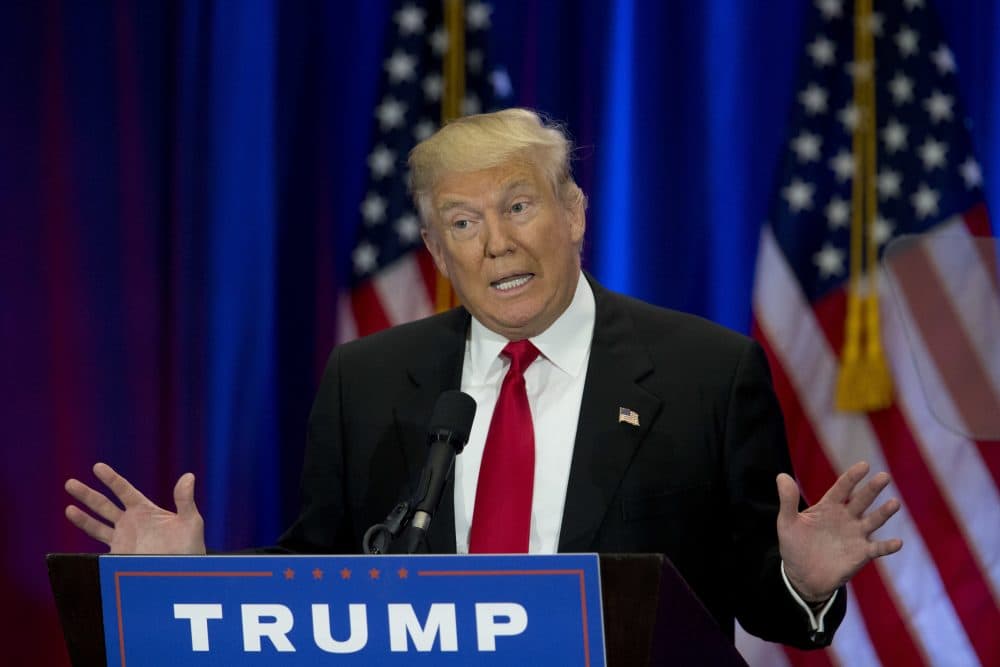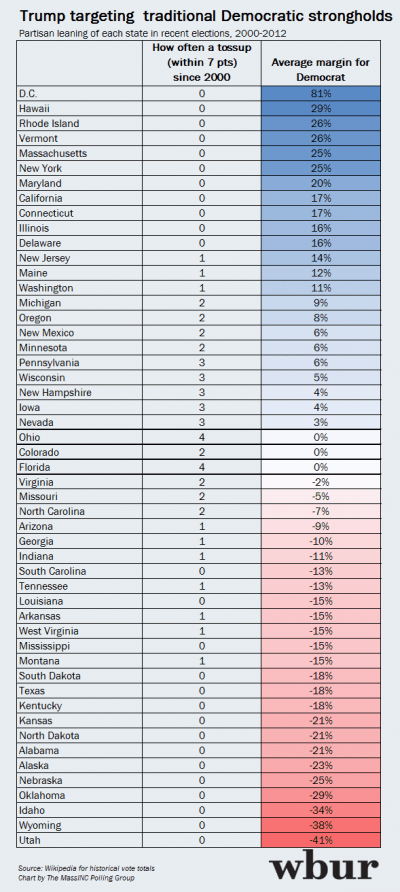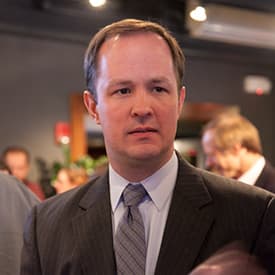Advertisement
Analysis: In Search Of Trump's Strategy

The path to 270 electoral votes is hard for any Republican presidential candidate these days, even with a clear strategy and a large, top-notch team.
Donald Trump just fired his campaign manager Corey Lewandowski, who was one of around 70 staffers. That's a tenth of the number the Hillary Clinton campaign employs. Trump's May fundraising reports were disastrously bad, his expenditures sometimes questionable, and his poll numbers sinking. The Clinton campaign is up with $23 million in advertising in swing states, which the Trump camp lacks the cash to match, even if they wanted to.
If bringing in a new team allows for a shift in strategy, it may be worth the upheaval of the last few days.
Because even after the news of last few days fades, Trump still needs a campaign strategy. He needs a clear set of realistic target states and a plausible way to win them. Recently, Trump has spent his time gazing at juicy red apples hanging from the tippy top of a very tall tree, even while the low branches are full of fruit and more lies rotting on the ground.
Bellwethers Of A Landslide
Over the past few months, Trump has rattled donors with talk of making a play for what reads like a list of Democrat strongholds: California, New York and Maryland, among others. His former campaign manager and several surrogates suggested Massachusetts was in play, and a super PAC dedicated to turning the Bay State red just popped up online. The states have very little in common other than being incredibly unlikely places for a Republican to win.

Trump has also mentioned Connecticut and New Jersey as winnable. The last two may be slightly more plausible than the other states, with recent polls running closer, but President Obama won each in 2012 with margins in the high teens. And more to the point, focusing on a hodgepodge of very hard-to-win states leaves the Clinton campaign working alone in what are very likely to be the actual toss-up states.
The truth is, if Trump wins New York and California, he will have likely already won 40 or more states. Add in Maryland and Massachusetts, and you are talking about a landslide somewhere between those of Ronald Reagan and FDR. If a Republican can reach that deeply into Democratic territory, the race is long over. Various surrogates — as well as Trump himself — have suggested he can fundamentally change the electoral map. But the ordering of the states in terms of their partisanship has been fairly stable over the last few cycles (with some exceptions).
Most state-level polling is now slightly more favorable to Democrats than the outcome in the previous cycle, but the general structure is about the same. There is no evidence in the polling so far that deep blue states are suddenly going to bounce out of the order and over to a Republican.
Thus, if the overall race is close, the competitive states in this cycle are likely to be the same as in recent cycles; they are not California and New York. California, in addition to being a near bottomless money pit for campaign advertising cash, is trending for Clinton by a 26-point margin at the moment, very close to the 23-point margin Obama ran up in 2012. The only major exception to the generally steady trend may be Utah, which has voted for Republicans by the widest margin of any state over the last few cycles, but where Trump is struggling to appeal to the state’s Mormon population.
It's Still Very Early, But Time Is Passing
There are still five months to go, and even with all of the negative headlines, Trump remains within striking distance. The most recent polling averages show him trailing Clinton by 6 points nationally, and losing some ground in swing states.
The trends are not great for Trump, but nor are they fatal. Polls can certainly change enough in five months to reverse Clinton’s recent gains. Clinton has her own polling problems, as she is disliked by a majority of voters and seen as scripted and untrustworthy.
But for Trump to catch up, he needs to have a more realistic and clearly defined strategy. This starts with figuring out which states are within his reach, and which are mirages that looked real only in the aftermath of his GOP primary dominance.
One upside to Trump's not-good-very-bad few weeks is that it offers an excuse for the campaign to conspicuously change course toward a more realistic strategy.
The next few weeks leading up to the convention will be key in determining whether that message is sinking in. But if the Trump camp continues chasing distant prizes, the Clinton camp may have the actual playing field all to themselves.
